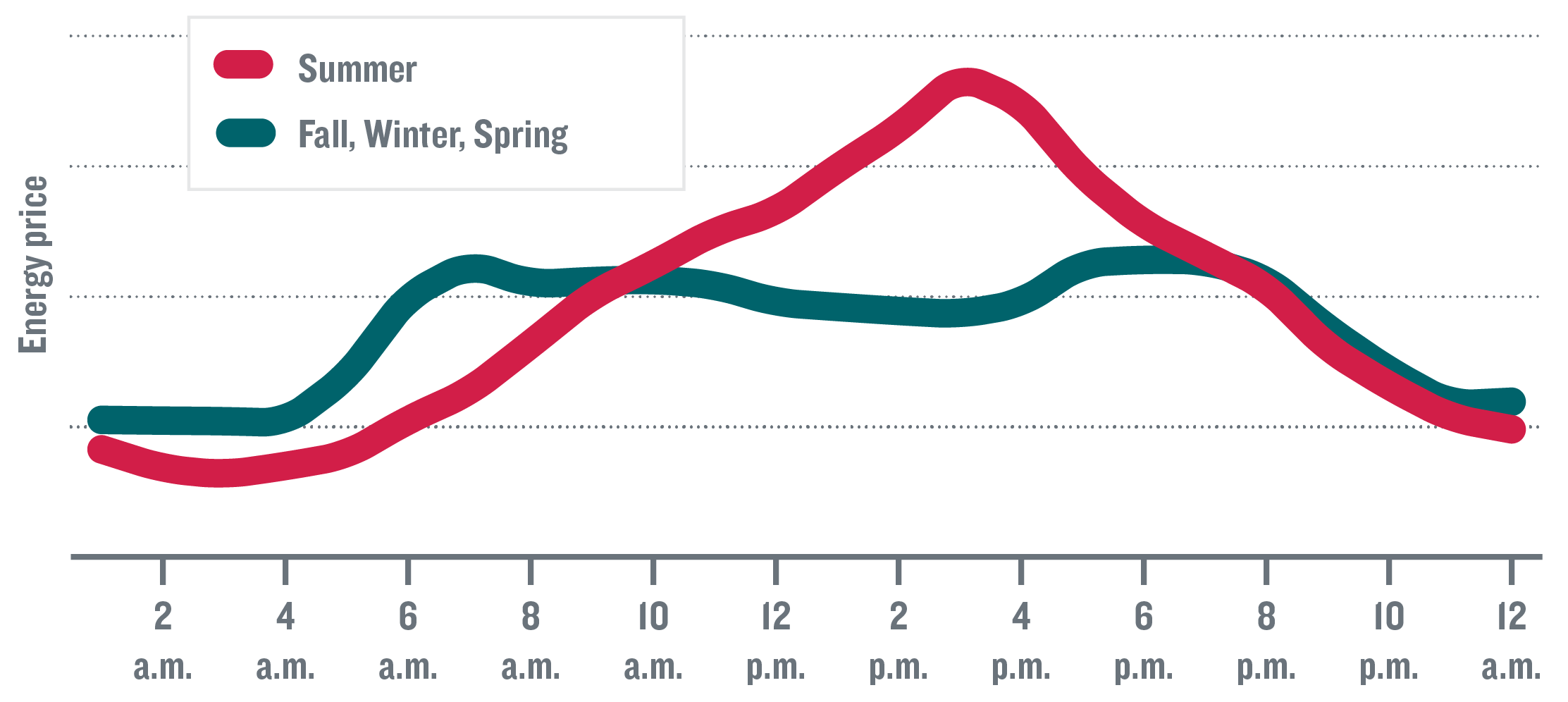Check Prices. Shift Usage. Reduce Electricity Bill.
With our Hourly Pricing charts you can see a variety of pricing trends including the day-ahead hourly price, today’s actual prices, and years of historical pricing data.
In general, the most important time to shift usage is during hot summer afternoons. During the fall, winter, and spring, prices on ComEd’s Hourly Pricing program typically remain low, but can spike due to extreme weather conditions. We broadcast three prices to help you track hourly prices: The real-time hourly market price, the current hour average price, and the day-ahead hourly market price.
Real-Time Hourly Market Price and Current Hour Average Price: Hourly Pricing participants are billed on the PJM real-time hourly market prices. ComEd simply passes along the hourly market prices with no mark-up. The real-time hourly market price is determined by the average of the twelve 5-minute prices from that hour, and so the averaged real-time hourly price is not known until after the hour has passed. The current hour average price is the real-time average of the current hour’s 5-minute prices. For additional details on the current hour, click on the “5-Minute Prices†button at the top of the pricing graph.
Day-Ahead Hourly Market Price: The PJM day-ahead hourly market price provides an indication of what the real-time hourly market prices could be for the following or current day. Remember, as an Hourly Pricing participant, you are billed on the real-time hourly price, not the day-ahead market price.
By clicking on one of the buttons on the above graph you can change your view from the current day to the current week, current month, or current year. You can also access historical pricing data to take a look at past trends in hourly electricity pricing.
Negative Prices: With real-time hourly market prices, it is possible for the price of electricity to be negative for short periods of time. This typically occurs in the middle of the night and under certain circumstances when electricity supply is far greater than demand. In the market, some types of electricity generators cannot or prefer not to reduce electricity output for short periods of time when demand is insufficient, and as a result some generators may provide electricity to the market at prices below zero. Since Hourly Pricing participants pay the market price of electricity, they are actually being paid to use electricity during negative priced hours. Delivery charges still apply.

